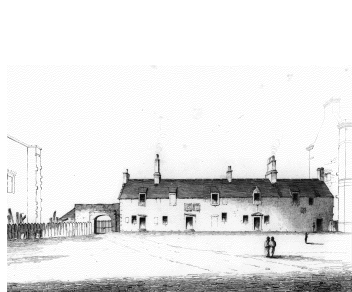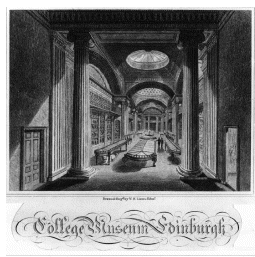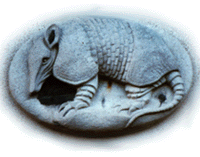
|
THE UNIVERSITY OF EDINBURGH |
Successive Professors, whilst acting as curators of the collection, set about changing the specimens in a fashion that suited their own requirements. Each Professor claiming that the specimens left to him were useless and moth eaten and that the collection would have to be newly begun to be of any value. This process of discarding specimens happened in 1779, when John Walker took over the Chair of Natural History from Robert Ramsey and again in 1804 when Robert Jameson succeeded Walker.
In 1812, the collection that Jameson had begun to amass was given the title, 'Royal Museum of the University', and moved to rooms in the then newly built University Quadrangle. These rooms are currently occupied by the Talbot Rice Art Centre.
Jameson died in 1854, but not before having arranged that the collection, then numbering some 74,000 specimens, was to be housed in a new National Museum. This was built next door to the University and governed by a separate 'museum' authority to which the Professor of Natural History would be responsible. This museum was first known as the Museum of Science and Art, then later as the Royal Scottish Museum. It became apparent after Jameson's death that the Museum and the University authorities were not to be the best of friends. The reasons for this were twofold. First, although the collection was housed in the museum it had been agreed that specimens could be borrowed for teaching. With specimens constantly on loan the museum became a nightmare to co-ordinate. Second, the museum authorities felt that the Professors were neglecting their keepership duties in favour of pursuing their own scientific research. Sir Charles Wyville Thomson had only been Professor for
two years (1870-72) before he left Edinburgh to sail with
the famous 'Challenger' expedition. This last straw broke
the back of the museum authorities who went on to appoint
their own Keeper to the collection and denied the University
access to the specimens. Once again, the University had to
set about acquiring a new collection for itself. |
|
The Twentieth Century 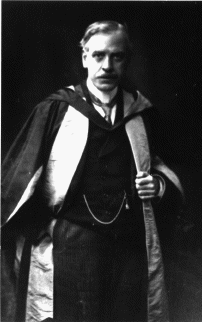
At the beginning of the twentieth century, when Cossar Ewart and J. Hartley Ashworth were the Professors in the department, the Old College buildings became sorely inadequate for both the new collection and any form of teaching or research, especially when men came home from fighting in the First World War. Ashworth travelled to the United States of America and delivered an appeal to the John D. Rockefeller International Education Board who replied with a gift of £74,000 towards the cost of building a new Department of Zoology. John Lorimer and John F. Matthews were appointed as architects to the new building which was to be built on the King's Buildings site on West Mains Road. The building, named the Ashworth Laboratory, was opened by Prince George on the 15th May 1929. This new building offered the most advanced facilities of its time. Ashworth's initial sketches for the department incorporated such features as a teaching museum to be built beside the main teaching laboratory, large north facing windows that reached from ceiling to bench level, ideal for microscopy. A special glass was developed for the ceiling in the museum, then measuring some 2,500 sq. feet, that would reduce the amount of harmful ultra-violet light entering the room. |
|
|
|
Significant rises in student intake during the early
fifties led inevitably to the need for increased laboratory
space. It was decided that the necessity for space took
priority over the needs of the collection and so the wall
that divided the main laboratory from the museum was knocked
down and the laboratory extended into the museum floor area.
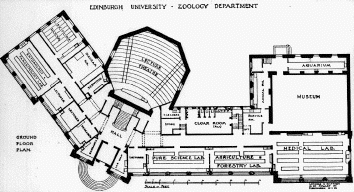 |
|
The three pillars in the laboratory show where the dividing wall once stood. Many of the display cases were moved either to the upstairs gallery or into the department's corridors. Many of the larger vertebrate specimens had to be given away or thrown out. However, the collection still contains many hundreds of specimens of scientific and historical interest and importance. Most prominent of which is the department's coral collection which was amassed by Sir Maurice Yonge at the request of Ashworth when the former was invited to direct a thirteen month expedition to Australia's Great Barrier Reef in 1928. The corals now form a special display dedicated to Sir Maurice. |
|
The Collection Today With the changing emphasis of biological teaching and
research towards studies of the function of cells and
molecules, it became increasingly apparent that the
collection needed a re-appraisal if the specimens were to
continue to serve an educational purpose. Although the
changing emphasis means that less time can be spared in
lectures for detailed descriptions of animals and their
structure, students still need a sound understanding of the
animal kingdom and the essential role animals play in the
'well being' of our planet. The idea arose, therefore of
using the collection to demonstrate the diversity of animal
life as a backcloth for physiological, cellular and
molecular studies of animal biology. This led in 1987 to the
establishment within the Department of Zoology of a
Community Programme Unit, funded by the Manpower Services
Commission, whose major objectives were to redisplay and to
re-awaken interest in the collection. The initial
computerization of the existing catalogue by the Unit
revealed at least 1,500 invertebrate specimens. Some of
these have been used to create displays which not only show
the great diversity of invertebrate animals but also their
importance in the planet's ecological balance.
During 1996 and 1997,
the vertebrate specimens housed in the museum gallery were redisplayed
by Zoology Honours students. Members of the Unit also
wrote this short account and the 'Full History' of the Collections.
In December 1997, the gallery was named in honour
of Aubrey Manning, Professor of Natural History (1973-1997).
The foundations of the Natural History Collections' web site were laid
in 1997 with the creation of a "virtual gallery" and web pages describing some of the mammalian
specimens. Since then attention has focused on expanding the web site to extend the
use of the Collections to those unable to visit in person.
|







